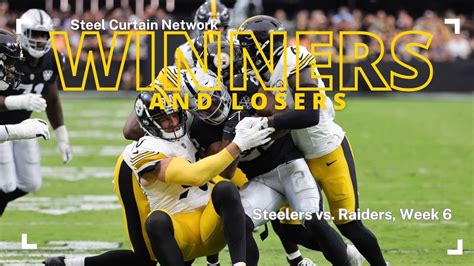
Tom Brady’s presence at the Indianapolis 500 on Sunday ignited a firestorm of boos from a significant portion of the crowd, yet the NFL legend remained unfazed, delivering the command to start engines and expressing his unwavering passion for the iconic race.
Indianapolis, IN – Tom Brady, the seven-time Super Bowl champion, experienced a mixed reception at the 108th running of the Indianapolis 500, held at the Indianapolis Motor Speedway on Sunday. Despite being met with a chorus of boos as he took to the stage to give the traditional command to start engines, Brady delivered the famous line with enthusiasm and later emphasized his deep appreciation for the race and its significance. The incident sparked considerable debate about the appropriateness of the reaction and the enduring appeal of Brady, even in contexts outside of football.
The boos, audible during the pre-race ceremonies, were a stark contrast to the cheers typically reserved for honored guests at the event. While the exact reasons for the negative reception remain speculative, some observers suggested it could be attributed to lingering animosity from fans related to the “Deflategate” scandal, while others pointed to Brady’s perceived association with teams other than the Indianapolis Colts. Regardless of the motivation, the boos were impossible to ignore, creating an unusual atmosphere as Brady prepared to address the massive crowd.
Despite the initial negativity, Brady proceeded with his duties, delivering the command, “Drivers, start your engines!” with a confident smile. The engines roared to life, signaling the commencement of the race and momentarily overshadowing the earlier jeers. Following the race’s start, Brady took to social media to express his feelings about the event. In a post on X, formerly known as Twitter, he wrote, “This is Indiana! LET’S GOOOOOO! What a start to the Indy 500! Unreal experience.” The post underscored his enthusiasm and demonstrated that the boos had not dampened his overall enjoyment of the occasion.
The Indianapolis 500 is one of the most prestigious events in motorsports, drawing hundreds of thousands of spectators to the Indianapolis Motor Speedway each year. The pre-race ceremonies are a highlight of the event, featuring patriotic displays, musical performances, and the traditional command to start engines, which is typically delivered by a celebrity guest. Brady’s selection as this year’s honorary starter was intended to add to the event’s star power and attract a wider audience, but the unexpected negative reaction introduced an element of controversy.
The incident involving Brady highlights the complex relationship between celebrity, sports fandom, and public perception. While Brady is widely regarded as one of the greatest quarterbacks in NFL history, his career has also been marked by controversy, particularly the “Deflategate” scandal, which involved allegations of tampering with footballs during the 2014 AFC Championship Game. The scandal resulted in a four-game suspension for Brady and fueled intense debate about his integrity and the fairness of the game.
Even years after the scandal, it appears that some fans continue to harbor resentment towards Brady, using opportunities like the Indianapolis 500 to express their disapproval. The boos directed at Brady also underscore the passionate and often unpredictable nature of sports fans, who can be quick to voice their opinions, whether positive or negative. The reaction also speaks to the regional and team-specific loyalties that often override broader appreciation for individual athletes. For many Indianapolis Colts fans, supporting a figure so closely associated with rival teams like the New England Patriots might be difficult to reconcile.
Brady’s response to the boos, both in his on-stage demeanor and his subsequent social media post, suggests that he is accustomed to dealing with public criticism and is not easily deterred by negativity. Throughout his career, he has faced intense scrutiny and pressure, both on and off the field, and has developed a reputation for maintaining a calm and composed demeanor in the face of adversity. His ability to brush off the boos and focus on enjoying the Indianapolis 500 is consistent with his overall approach to handling public attention.
The debate surrounding Brady’s reception at the Indianapolis 500 also raises questions about the role of celebrities in sporting events. While celebrity appearances can generate excitement and attract new fans, they also carry the risk of alienating existing fans who may view them as outsiders or unwelcome distractions. In this case, Brady’s presence clearly elicited a strong reaction from a segment of the crowd, underscoring the challenges of balancing celebrity appeal with the traditions and loyalties of a long-established sporting event.
Ultimately, the incident involving Brady at the Indianapolis 500 serves as a reminder of the enduring power of sports to evoke strong emotions and generate lively debate. Whether the boos were justified or not, they undoubtedly added an unexpected layer of drama to an already highly anticipated event. And while the negative reception may have been disappointing for some, it did not detract from the overall spectacle and excitement of the Indianapolis 500, which remains one of the most cherished traditions in motorsports. The presence of such a high-profile figure like Brady, even amidst controversy, served to amplify the event’s reach and solidify its place on the global sporting stage.
The Indianapolis 500 proceeded as planned, with Josef Newgarden ultimately winning the race in a dramatic finish. However, the pre-race narrative was undeniably shaped by the unexpected controversy surrounding Tom Brady, demonstrating the enduring power of celebrity and the sometimes unpredictable nature of public opinion. The incident provided a talking point that extended beyond the world of motorsports, highlighting the intersection of sports, celebrity culture, and social media in contemporary society. Brady’s ability to remain composed and positive in the face of negativity further solidified his image as a resilient and self-assured public figure, even in situations where he is not universally embraced.
The incident also prompts reflection on the nature of fandom and the expectations placed upon athletes and celebrities. While fans are entitled to express their opinions, the line between legitimate criticism and gratuitous negativity can sometimes be blurred. In Brady’s case, the boos appeared to stem from a combination of factors, including lingering resentment from past controversies and regional loyalties. However, the intensity of the reaction underscores the powerful emotional connection that fans feel towards their teams and the athletes they support (or oppose).
Moving forward, it remains to be seen whether the incident at the Indianapolis 500 will have any lasting impact on Brady’s public image or his future involvement in sporting events. Given his track record of success and his demonstrated ability to handle public scrutiny, it is unlikely that the boos will significantly alter his overall trajectory. However, the incident serves as a reminder that even the most accomplished and admired figures are not immune to criticism and that public opinion can be fickle and unpredictable.
The 108th running of the Indianapolis 500 will undoubtedly be remembered for its exciting race and dramatic finish, but it will also be remembered for the unexpected controversy surrounding Tom Brady’s appearance. The incident provides a valuable case study in the dynamics of celebrity, sports fandom, and public perception, highlighting the challenges and opportunities that come with being a high-profile figure in the public eye. Brady’s response to the boos demonstrated his resilience and self-assurance, further solidifying his image as a figure who is not easily deterred by negativity. And while the negative reception may have been disappointing for some, it ultimately served to amplify the event’s reach and solidify its place on the global sporting stage.
The incident also sparked discussions about the role of event organizers in selecting honorary guests and the potential for unintended consequences. While Brady’s selection was likely intended to generate excitement and attract a wider audience, it also carried the risk of alienating existing fans who may have held negative perceptions of him. Moving forward, event organizers may need to carefully consider the potential for controversy when selecting honorary guests and take steps to mitigate any negative reactions.
In conclusion, Tom Brady’s appearance at the Indianapolis 500 was a memorable and controversial event that highlighted the complexities of celebrity, sports fandom, and public perception. Despite being met with a chorus of boos, Brady remained unfazed and delivered the command to start engines with enthusiasm. His response to the negativity demonstrated his resilience and self-assurance, further solidifying his image as a figure who is not easily deterred by criticism. While the incident may have been disappointing for some, it ultimately served to amplify the event’s reach and solidify its place on the global sporting stage. The 108th running of the Indianapolis 500 will undoubtedly be remembered for its exciting race and dramatic finish, but it will also be remembered for the unexpected controversy surrounding Tom Brady’s presence.
Beyond the immediate reactions, the Brady incident offers a broader commentary on the evolving landscape of sports and entertainment. The lines between these two spheres are increasingly blurred, with athletes becoming brands and celebrities leveraging their fame to cross over into the world of sports ownership and event participation. This convergence creates both opportunities and challenges, as demonstrated by the mixed reception Brady received. While his presence undeniably brought increased attention to the Indy 500, it also sparked a controversy that overshadowed the actual race for some.
Furthermore, the incident underscores the power of social media in shaping public discourse. Brady’s own response on X (formerly Twitter) allowed him to directly address the situation and present his own narrative. This highlights the increasing importance of athletes and celebrities controlling their own messaging and engaging directly with their fans (and critics) through social media platforms. The speed and reach of social media also mean that controversies can erupt and spread rapidly, requiring individuals and organizations to be prepared to respond quickly and effectively.
The lasting legacy of the Brady incident at the Indy 500 may well be its contribution to the ongoing conversation about the role of celebrity in sports and the complex relationship between athletes, fans, and the media. It serves as a reminder that even the most successful and admired figures are not immune to criticism and that public opinion can be influenced by a variety of factors, including past controversies, regional loyalties, and social media narratives.
The event also brought forth discussions on the definition of sportsmanship and fan behavior. While the freedom to express opinions is a cornerstone of sporting events, the line between passionate support and disrespectful behavior remains a subject of debate. The booing of Brady, while potentially stemming from valid grievances, also raises questions about whether such displays detract from the overall spirit of competition and camaraderie that sporting events are meant to foster.
In the days following the Indy 500, the discussion surrounding Brady’s reception continued to evolve. Some commentators defended the boos as a legitimate expression of fan sentiment, while others criticized them as being disrespectful and unsportsmanlike. The debate highlighted the diverse perspectives and opinions that exist within the world of sports and the challenges of finding common ground when it comes to issues of fandom and public behavior.
The Tom Brady Indianapolis 500 incident further emphasizes the global reach and cultural significance of major sporting events. The Indy 500, with its rich history and tradition, attracts a diverse audience from around the world. The presence of a figure like Brady, with his international recognition, amplifies the event’s global appeal but also introduces the potential for cultural clashes and misunderstandings. The incident serves as a reminder of the importance of cultural sensitivity and awareness when organizing and promoting international sporting events.
Moreover, the Brady episode can be viewed through the lens of evolving societal norms and expectations. In an era of heightened awareness of social justice issues and increased scrutiny of public figures, athletes and celebrities are often held to higher standards of accountability. The boos directed at Brady may have been influenced, in part, by a desire to hold him accountable for past controversies and to express disapproval of his perceived behavior. This reflects a broader trend in society towards greater transparency and accountability for individuals in positions of power and influence.
The incident also serves as a reminder of the importance of preparation and crisis management for organizations involved in large-scale events. While it may not have been possible to anticipate the exact nature of the reaction to Brady’s presence, event organizers could have had contingency plans in place to mitigate any negative impacts. This includes having clear communication strategies, security protocols, and procedures for addressing unexpected incidents.
The controversy surrounding Brady’s appearance also offers valuable lessons for athletes and celebrities who are seeking to expand their reach and engage with new audiences. While it is important to be authentic and true to oneself, it is also important to be aware of the potential for misinterpretations and to be prepared to address any concerns or criticisms that may arise. This requires careful consideration of one’s public image, messaging, and overall brand strategy.
In addition, the incident underscores the importance of media literacy and critical thinking for consumers of news and information. In an era of social media and instant communication, it is easy to be swayed by sensational headlines and biased narratives. It is essential to be able to evaluate sources critically, to distinguish between facts and opinions, and to form one’s own informed judgments.
The Tom Brady Indianapolis 500 episode will likely continue to be analyzed and debated for years to come. It is a complex and multifaceted event that touches on a wide range of issues, including celebrity culture, sports fandom, public perception, social media, and societal norms. By examining the incident from different perspectives, we can gain valuable insights into the dynamics of contemporary society and the challenges and opportunities that come with being a public figure in the 21st century. Ultimately, the Brady incident serves as a reminder that even in the world of sports and entertainment, there are no simple answers and that every event is subject to interpretation and debate.
Frequently Asked Questions (FAQ)
-
Why was Tom Brady booed at the Indianapolis 500? The exact reasons are speculative, but possible factors include lingering resentment from the “Deflategate” scandal, his association with rival teams like the New England Patriots (opposed to the Indianapolis Colts), and the general tendency for sports fans to express strong opinions, whether positive or negative, toward public figures.
-
How did Tom Brady respond to the boos? Brady remained composed, delivering the command, “Drivers, start your engines!” with a smile. Afterward, he posted on social media, expressing his enthusiasm for the Indy 500 and stating, “This is Indiana! LET’S GOOOOOO! What a start to the Indy 500! Unreal experience.”
-
Was Tom Brady the only celebrity present at the Indianapolis 500? While Tom Brady was the honorary starter and garnered significant attention, the article doesn’t provide information about other celebrities who may have been present at the event.
-
What is the significance of the command “Drivers, start your engines!” at the Indianapolis 500? The command is a traditional part of the pre-race ceremonies, signaling the official start of the race and adding to the excitement and anticipation of the event. It’s typically delivered by a celebrity guest, adding to the event’s star power.
-
Did the booing incident affect the overall success or viewership of the Indianapolis 500? The article suggests that while the booing incident introduced controversy, it didn’t detract from the overall spectacle and excitement of the race. In fact, it may have amplified the event’s reach and solidified its place on the global sporting stage by generating additional media attention and discussion.









